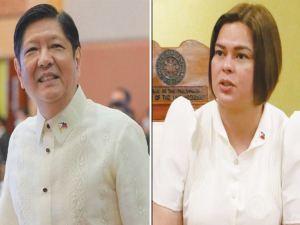But warns of political, overheating risks
CREDIT rating agency Moody’s Investors Service affirmed on Tuesday the Philippines’ “Baa2” minimum investment grade rating and a stable outlook, saying the domestic economy would remain strong. But it warned of political risks and cited indications of overheating in the economy.
“The affirmation of the Baa2 rating and the assignment of a stable outlook balances positive and negative factors,” Moody’s said in a statement released on Tuesday.
Moody’s said it expected the Philippines’ strong economic performance and debt consolidation to continue, and converge with the key metrics of its peers.
“The Philippines’ real GDP [gross domestic product]growth averaged 6.4 percent per year between 2014 and 2016, more than twice the corresponding median for Baa2-rated countries. We expect growth to be sustained at above 6 percent per year over the next two years, driven largely by the private sector,” it said.
The credit rater noted that the Philippines’ unconsolidated general government debt, which includes the holdings of social security institutions, fell to 38.3 percent of GDP in 2016 from a peak of 47.8 percent in 2009, supported by rapid nominal GDP growth and tighter fiscal policy.
“In contrast, the corresponding peer median for Baa2-rated countries has trended higher in recent years and is now higher than in the Philippines,” it said.
Consequently, the Philippines’ debt affordability continued to improve as interest payments as a share of revenue, excluding privatization receipts, fell to 13.9 percent in 2016, more than 40 percent lower than the 24.4 percent recorded in 2010, albeit still above the 8.5-percent median ratio among Baa2-rated sovereigns.
Risks
The debt watcher however said domestic political developments could potentially undermine institutional strength and economic performance.
Recent events such as the conflict in Marawi and the imposition of martial law in Mindanao are examples of escalating domestic political risks that could – should they multiply and escalate – undermine institutional strength and, ultimately, economic growth, it said.
“[D]ownside risks include a worsening of the Islamist insurgency that could lead to an expansion of martial law, undermine domestic business confidence, and disrupt economic activity including in economically significant regions,” it stressed.
Moody’s said these events did not appear to have weighed on economic growth, or derail the government’s economic reform agenda. The first package of the administration’s Comprehensive Tax Reform Package passed through the lower house of Congress in May, in part due to the intervention of President Rodrigo Duterte, it said.
“However, the confrontational nature of the administration’s political agenda could potentially reduce the effectiveness of governance, or negatively affect investment and growth,” it said.
On external risks, the credit ratings agency said any further shock to the economies of the Gulf Cooperation Council region could reduce remittance inflows, and US policies that could encourage on-shoring of jobs could have a negative impact on business process outsourcing, a key industry.
Overheating
Moody’s also noted that while broad macroeconomic stability had been maintained, a number of metrics indicated material capacity constraints that signal a risk of overheating in the economy.
“[T]he prolonged period of robust growth has led to emerging capacity constraints, as represented by rising inflation and the re-emergence of a current account deficit. High credit growth in excess of nominal GDP growth since 2014 also exposes the banking system to unseasoned risk,” it pointed out.
Policy response has been effective, and mitigating measures exist, it said, but managing the risk of overheating still depended on the government’s capabilities.
The central bank, though, has maintained the scope for policy tightening, including a more strident application of macroprudential measures, it noted, given Philippine banks’ considerable capital and liquidity buffers.
Moody’s also noted that the stock of foreign exchange reserves remained well above the country’s cross-border debt servicing requirements, as well as the entire amount of external debt.
“However, looking ahead, the government’s ability to continue to contain these rising pressures will depend in part on its efforts to raise investment in order to enhance infrastructure and address economic bottlenecks,” said.
(M. Caraballo, MS)








